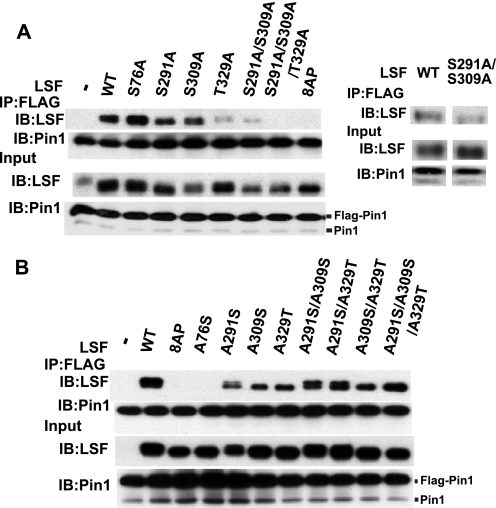FIGURE 3.
Pin1 binds LSF through multiple Ser/Thr-Pro motifs. A, FLAG-Pin1 transduced NIH 3T3 cells were transiently transfected with retroviral expression constructs for wild-type LSF (WT), alanine substitution LSF mutants of the indicated, specific SP/TP motifs, and a LSF mutant with all eight ST/TP motifs substituted to AP (8AP). FLAG-Pin1 in the cell extracts was immunoprecipitated with anti-FLAG-M2 antibody. The immunoprecipitates and input extracts were resolved by SDS-PAGE on a 12.5% gel (for analysis of Pin1) or a 7.5% gel (for analysis of LSF) and immunoblotted using anti-Pin1 (Calbiochem) and anti-LSF-314 antibodies, respectively. FLAG-Pin1 migrates substantially more slowly than the endogenous Pin1, as indicated. Right panel, additional results from an independent experiment, in which expression levels of wild-type and S291A/S309A LSF were more comparable. B, FLAG-Pin1 transduced NIH 3T3 cells were transiently transfected with retroviral expression constructs for wild-type LSF (WT), the 8AP LSF mutant or add-back LSF mutants, where the indicated Ser or Thr residue(s) were added back into the 8AP background. Coimmunoprecipitation analysis was carried out as in A. Results are representative of 2–4 independent experiments.

